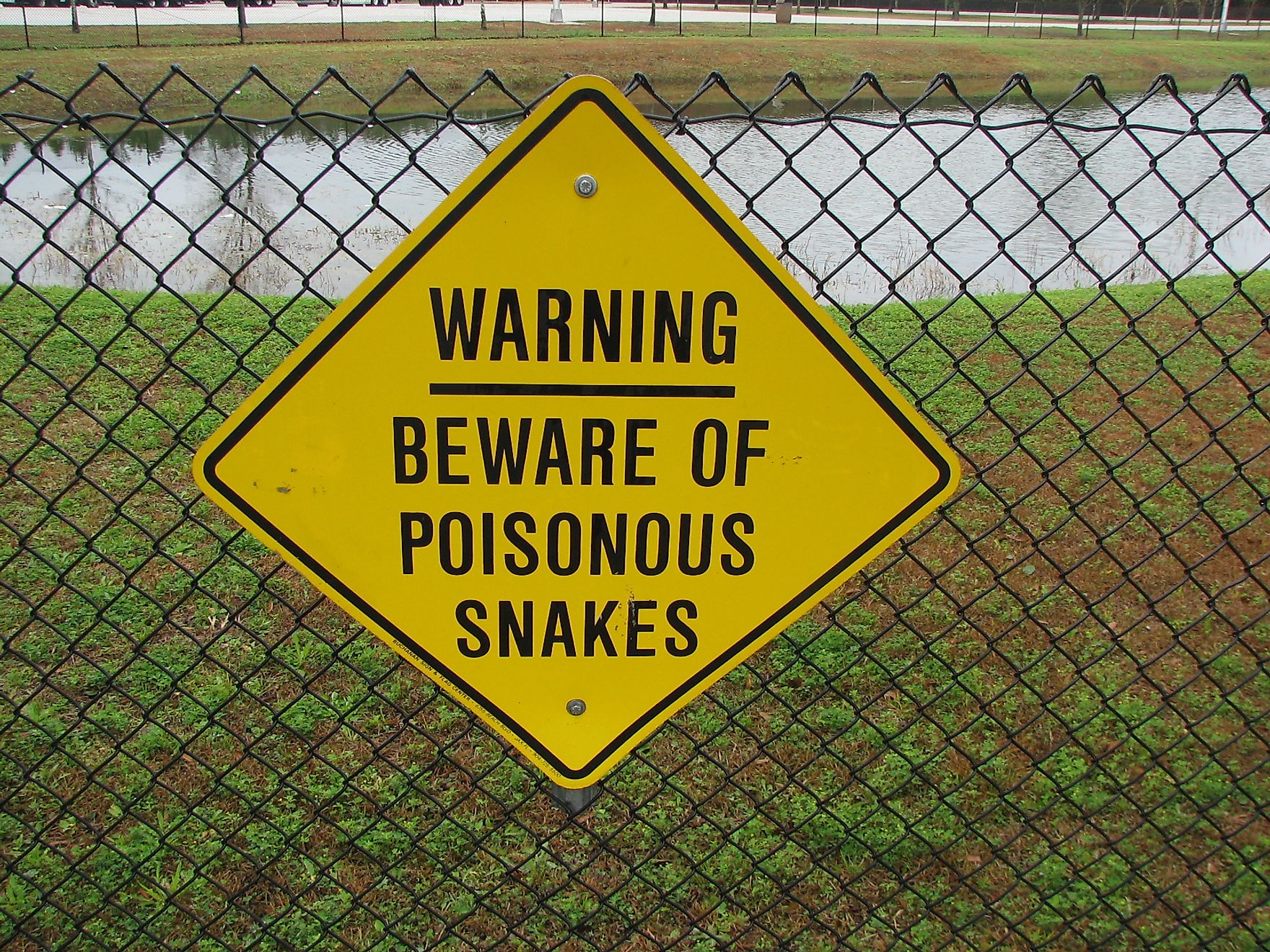
The 13 Deadliest Animals In Wisconsin
It takes as little as thirty minutes for a healthy person to succumb to the most potent snake venom! Wisconsin’s rich and diverse landscapes, including lush forests, glistening lakes, and sprawling parklands, serve as the ideal habitat for some of the world’s most dangerous animals. Given the endless outdoor opportunities in this dense wilderness, encounters with humans are commonplace, with some, unfortunately, ending up in a confrontation. Adventurers exploring the state’s backcountry would be wise to avoid them, from venomous snakes and stinging insects to territorial beasts.
This article sheds light on a couple of the not-so-friendly creatures that call Wisconsin home. While the odds of a deadly encounter are low, it's important for hikers, campers, and outdoorsy tourists who spend time in rural Wisconsin to be aware of the hidden dangers lurking in the wild and how to steer clear of conflicts. Knowledge is critical to enjoying the Badger State’s natural wonders without risking life or serious injury from its most dangerous denizens. Let’s take a look at some of the deadliest animals in Wisconsin.
Timber Rattlesnake
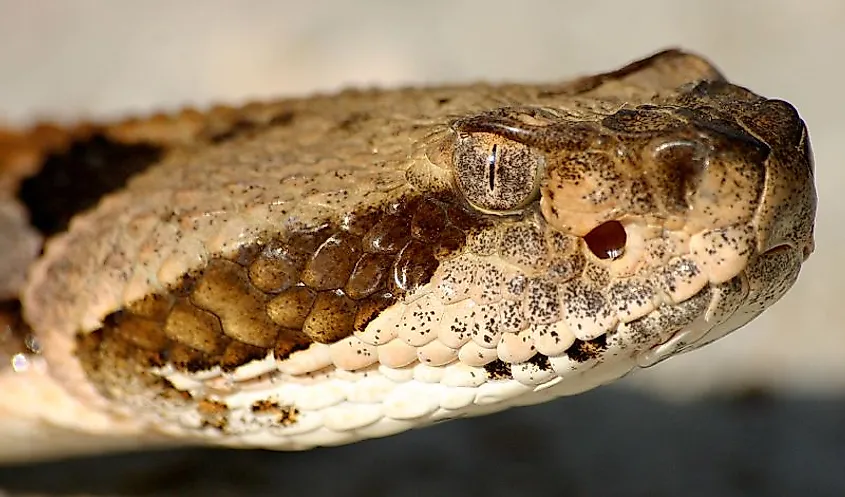
The timber rattlesnake (Crotalus horridus) is a venomous species that dwells in a range of habitats, from hilly forests and swamps to agricultural fields. In Wisconsin, you can find them in the rugged open bluffs on the western and southwestern sides of the state, where prey like frogs, birds, and smaller snakes are in abundance. Their diverse range of habitats increases the chances of human interactions, especially with outdoor adventurers and those living in rural Wisconsin. Adults grow up to 60 inches long, with color ranging from yellowish brown to black, and have distinctive crossbands along the back.
These snakes are ambush predators and rely on stealth and camouflage to strike when the prey comes within range. A trademark rattle will warn you when you get close, failure to which could end up in a bite. Although they’d rather flee than bite, their venom is potent enough to kill a man, and any bite is a medical emergency. While bite incidents are rare in Wisconsin, adventurers are advised to keep a safe distance when they encounter one along the trail as they are probably hunting for prey and not looking for trouble.
Cougar

The cougar (Puma concolor) is also known as a mountain lion, panther, and catamount, depending on where you are from. This big cat roams the mountainous regions, rocky terrains, and forests throughout Wisconsin, recognized by their reddish-brown to gray coloration with a black-tipped tail. Cougars can grow 35” tall and weigh up to 220 pounds. Their sturdy hind legs give them the agility to sprint at 50 mph and leap 15 feet into the air. Given their territorial nature, human interactions can easily turn sour, especially when encountering a mother with cubs.
Powerful fangs, sharp claws, and stealth when stalking prey make cougars a dangerous adversary for hikers in the wild. There have been reports of cougars stalking backpackers for periods before finally lunging on them. While they do not have any natural predators, cougars are at risk of hunters constantly encroaching into their territory.
American Black Bear
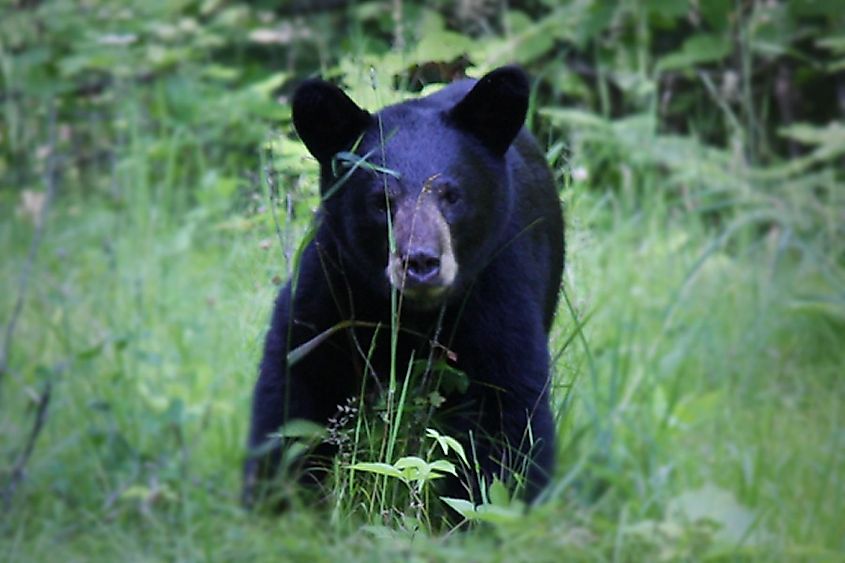
The black bear (Ursus americanus) occupies different habitats, including densely forested areas with swamps, especially in the northern regions of Wisconsin. However, they are drawn by cornfields, beehives, and berry farms and stray into residential areas in search of food. You can find them fiddling with trash cans and bird feeders, resulting in conflict with humans. Although not as huge as the American grizzly, black bears can still grow to be 6 feet tall when standing on twos and weigh up to 600 pounds. They have a thick black coat with a small head and rounded ears.
Their strong bite, long and sharp non-retractable claws, and aggressive nature pose a danger to humans during confrontations, although most are coy around people. There have been cases of attacks on hikers and campers who stray into their territories. Black bears are at the top of the food chain and will eat everything from deer and elk to insects and berries. However, they are always at risk of hunters.
Wild Boar
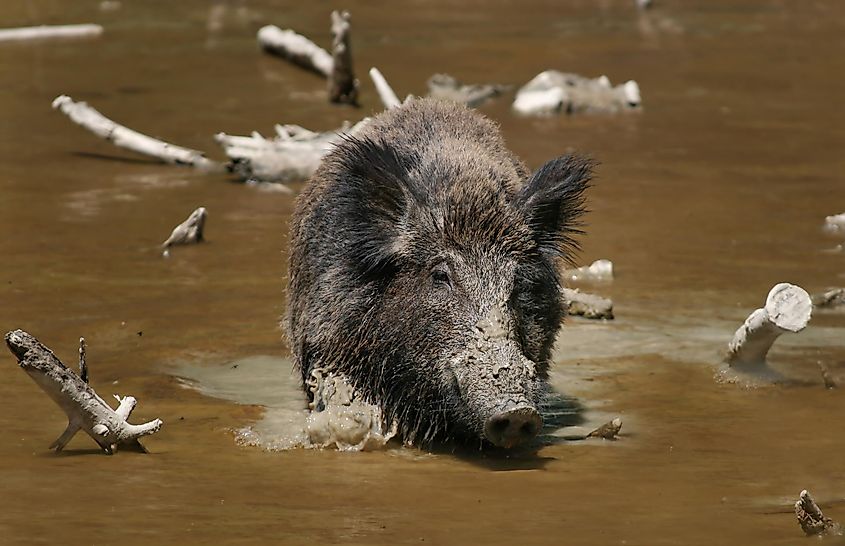
The wild boar (Sus crofa), also known as feral hog, has for years been spotted in much of Wisconsin, primarily in Crawford, Grant, Florence, and Iowa counties. Their omnivorous diet makes them a dangerous invasive species, damaging crops on farmlands, with their population exploding in the last 50 years since being introduced from overseas. They have a large, intimidating face/head with short legs and thick, coarse hairs on their back. Adults can grow to be 8 feet in length and weigh up to 600 pounds. Sharp tusks hanging out of their mouths and an aggressive, fearless attitude make wild boars a danger to humans.
They can easily charge at you when cornered or feeling threatened, so it is best to give them a wide berth. Wild boars are prolific breeders and multiply at a staggering rate, which leaves controlling their population in Wisconsin to the mercy of hunters and farmers with guns.
Coyote
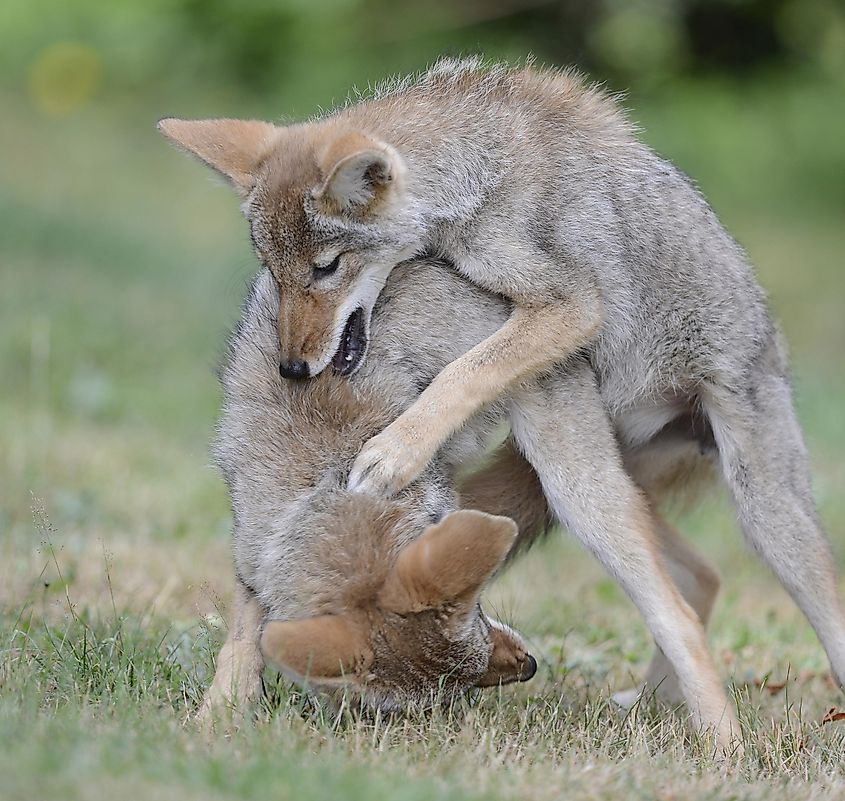
The coyote (Canis latrans) is found throughout all the counties of Wisconsin, preferring to stay in wooded regions, prairies, and marshes with thick cover. Recognized by their grayish to tallow-brown color, narrow muzzles, black snouts, and bushy tails, coyotes are smaller than the average domestic dog and adults can weigh up to 44 pounds. Although primarily carnivorous, they can diversify their diet to include food crops, berries, and grass. With a cunning character and sharp canines, they can sneak up behind you for a bite and may, on rare occasions, spread rabies.
Interactions with humans are commonplace along wilderness trails and some will snoop into backyards in their search for food. Their adaptability allows them to thrive in different environments. With scavenger tendencies, they play an important role in the food chain. While they have no natural predators, they are usually hunted for fur.
Moose

Moose (Alces alces) are the largest wild animals in Wisconsin. At their heaviest, they can weigh about 1,500 pounds and stand at a whopping six feet. They are also the biggest species in the deer family and have a distinctive flap under their throats known as dewlap. In Wisconsin, they occupy wooded habitats in the northern region, although their population is relatively low. Bulls grow huge antlers in the summer and spring and their large frame can be intimidating when you come across one. They get pretty territorial and aggressive during mating season as testosterone builds up, and can attack without warning by stumping on you with hardy hooves.
Female moose are very defensive of their young ones and are known to fight to the death while protecting them from predators like wolves, bears, and humans. You’d be wise to stay clear of any moose you come across with babies.
Gray Wolf
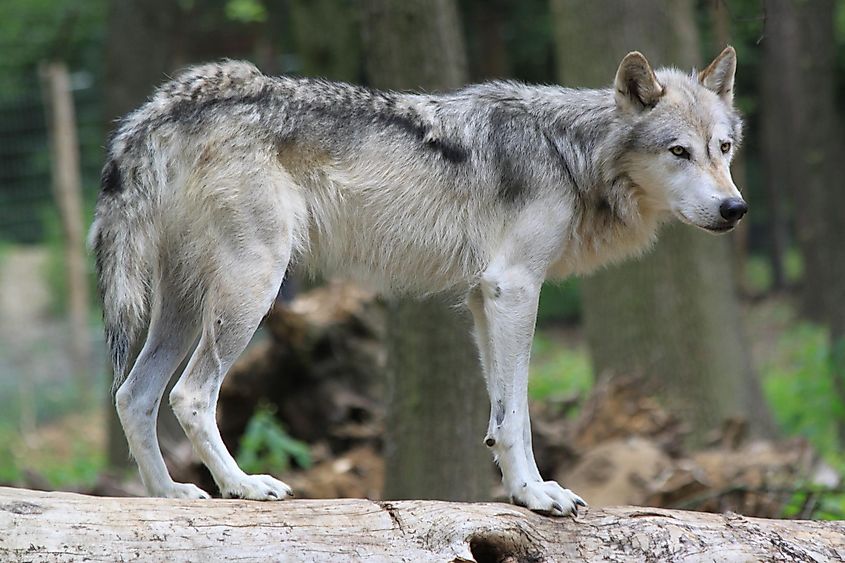
Wisconsin has a robust gray wolf (Canis lupus) population that, according to the Department of Natural Resources, has quadrupled in the last few years. You can find them in the northern and central forests of Wisconsin where they hunt prey like deer, beavers, and wild turkeys in the woods. Gray wolves weigh between fifty and one hundred pounds and sport varied color patterns, from gray to black. They move in packs and although they may not be a danger to humans, their massive canines and strong bite force can cause significant damage in the event of a nasty confrontation.
Keeping a safe distance when you encounter them on the trail prevents any level of aggression from the animals. Also, try to keep your dogs and other pets on a leash as they tend to attack, which never ends well.
Snapping Turtle
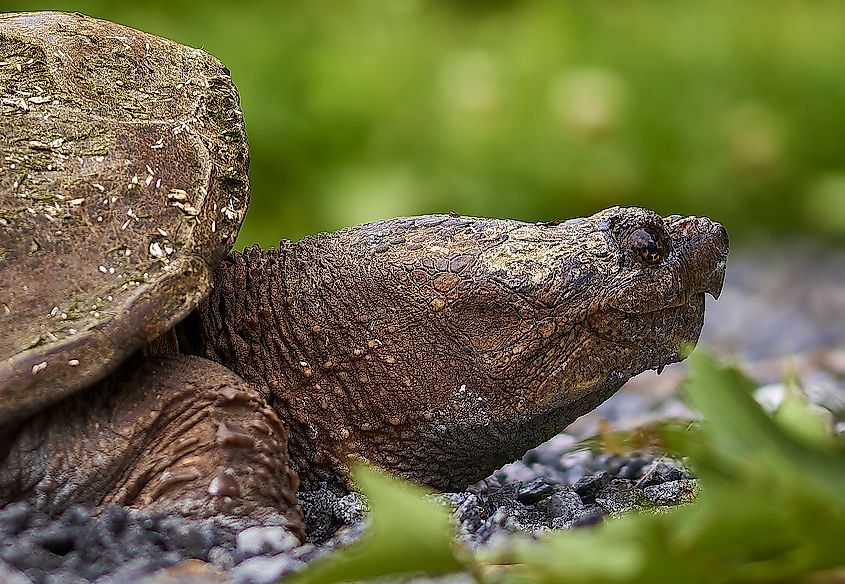
As clumsy and harmless as it may look, the snapping turtle (Chelydra serpentine) is one of the deadliest animals in Wisconsin. They choose to stay in aquatic habitats throughout the state, including lakes, ponds, and the backwaters of rivers, surviving on a diet of fish, frogs, and birds. Growing to 18” long and weighing up to 35 pounds, the snapping turtle has an elongated neck with a chunky head, large webbed feet, and a long tail. The shell can be brown, black, or olive with no specific pattern. Encounters with humans come about when indulging in aquatic recreations like swimming, fishing, paddling, and kayaking on different waterways.
While they will not attack humans, they may be forced to defend themselves when sensing danger, which usually involves people picking them up. Their strong bite force can cause serious damage and result in infection. In the water, they are generally docile and you can ease their aggression by placing them back in their habitat.
Elk

Elk (Cervus Canadensis) are the second-largest animals in the deer family found in the wilderness of Wisconsin. They are spread across the state, choosing boreal forests, woodlands, and grassland as their habitat, with plenty of greenery for their diet. Elk can weigh 500 to 800 pounds and grow 5 feet tall. Their coat coloration changes from a dark brown in winter to a reddish-brown in summer. They have thick bodies and long legs, and males (bulls) grow massive and sharp antlers made out of hard material. Encountering them on the trail during the mating season can be dangerous, as they easily charge at anyone invading their territory.
If exploring parks and hiking trails in winter, stay away from male elk because they can be aggressive and unpredictable when searching for a mate. In spring, the females turn into the aggressors in defense of their newborns.
North American Porcupine
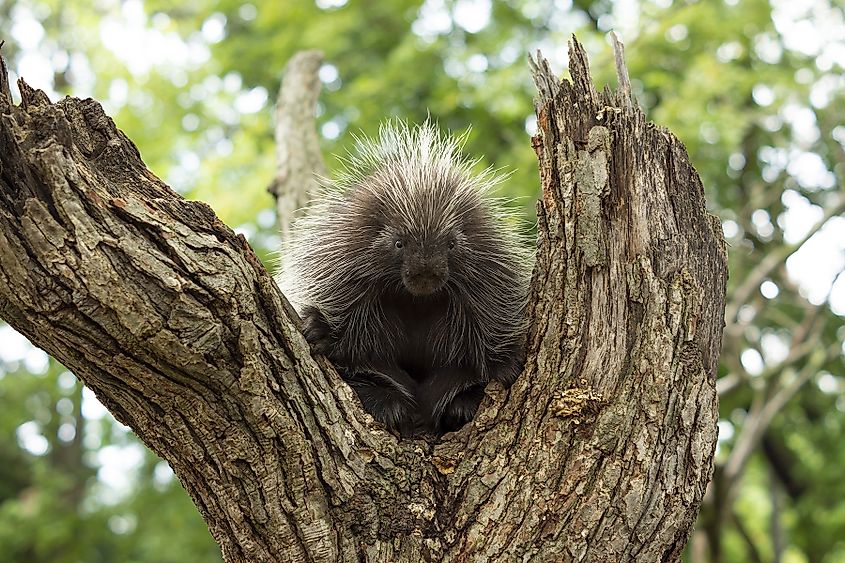
The North American porcupine (Erethizon dorsatum) lives in the coniferous and deciduous forests of America’s Dairyland. At only twenty pounds, they are tiny creatures that grow three feet long. Their fur color ranges from brownish-yellow to black and white highlights on the almost thirty thousand quills covering their bodies. At first glance, they look cute and timid, but when forced to defend themselves, their sharp quills turn into a deadly weapon. Porcupines will cause tension on their skin, causing the quills to stand and face all directions when threatened.
But before that, they will chatter their teeth, accompanied by a chemical odor to warn predators. Avoiding them during encounters is a wise option, as the quills can penetrate deep into the skin and cause infection. In the food chain, they are prey to carnivorous animals like coyotes and other predators.
Wasp

In Wisconsin, people refer to wasps (Vespidae) as yellow jackets or hornets. These aggressive insects are everywhere in Wisconsin and build their nests in people’s homes and outbuildings, close to sources of nectar. This proximity to humans often leads to conflict in the event of unwarranted interactions. Wasps are aggressive animals that easily get triggered, and an attack on humans can lead to tragic consequences. Their sting is painful and causes allergic reactions that manifest differently, depending on the individual.
Wasps are commonly confused for bees, but some physical attributes distinguish them from their stinging counterparts. For instance, they are larger and have spines on their legs instead of hair. Despite being dangerous to humans, wasps play a significant role in the environment as pollinators and should not be victimized.
Fire Ants
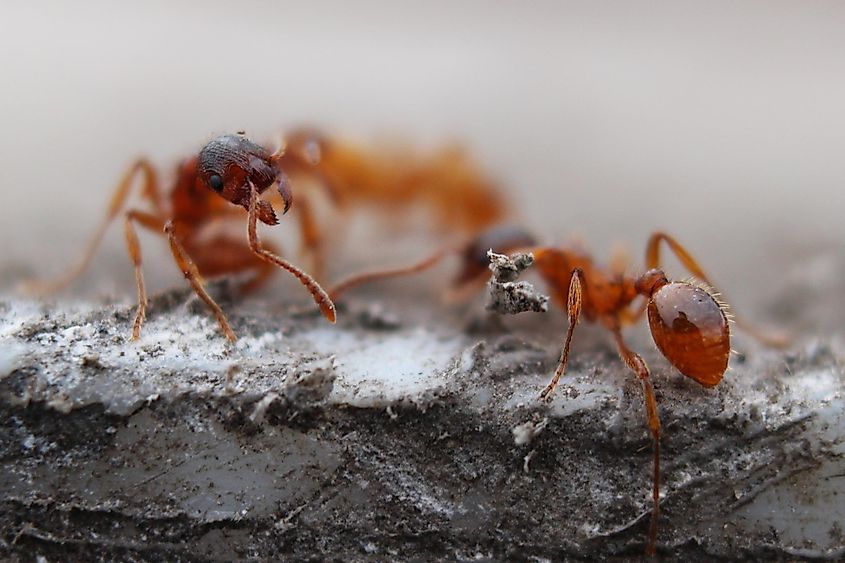
Fire ants (Solenopsis invicta) are the most aggressive species in the ant family. They occur in varying shades of red, from reddish-brown to crimson, and build their nest around human settlements, especially in the backyard. Fire ants are known for their painful stings, which can be compared to being burnt. Besides the pain, some people suffer extreme allergic reactions to the bite of a fire ant. Their colonies feature thousands of individuals, split into three distinct groups, each with a different function.
The best thing to do when you come across an anthill, whether near the home or in the wilderness, is to avoid it. Fire ants play a vital ecological role, preying on other arthropod pests that can be a nuisance to humans, including ticks and cockroaches.
Mosquitoes
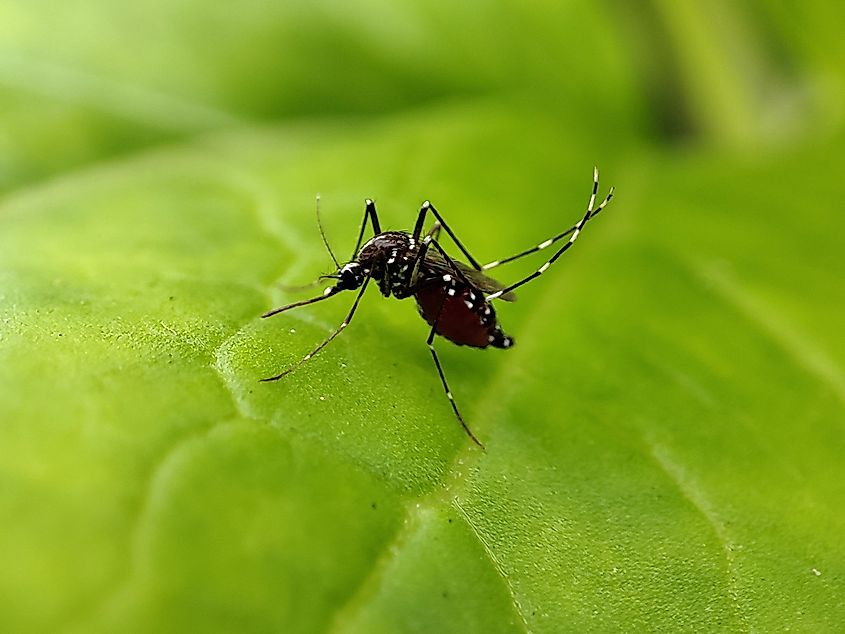
The various waterbodies across Wisconsin provide a thriving breeding ground for mosquitoes (Culicidae). Despite their tiny size, these blood-sucking insects can easily be considered the deadliest animals in the state due to their far-reaching consequences. Mosquitoes are generally a nuisance, and some species are carriers of dangerous diseases that they spread to humans and animals, such as dengue fever, malaria, and the Zika virus. Contracting any of these diseases can have a tragic effect on your health, calling for medical care.
Recreation activities like hiking and camping in the great outdoors predispose adventurers to mosquitoes and the danger of suffering bites. The best way to keep them at bay is to carry insecticides or wear mosquito repellents during your outdoor exploits.
Final Thought
While Wisconsin offers immense natural beauty, venturing into the wilderness does carry some risks due to dangerous animals calling the state home. From venomous snakes to territorial bears, these deadliest animals in Wisconsin have all been known to harm or even kill people under the right conditions. However, it's also important to keep their threats in perspective. For the most part, these animals only attack when they feel threatened or are surprised unexpectedly. With basic precautions like avoiding encounters and leaving young animals alone, the average person has a very low likelihood of a negative interaction.











